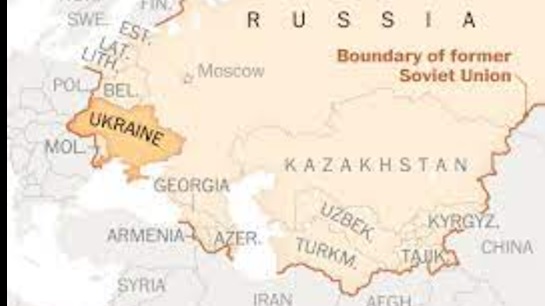Russia-Ukraine War: Exposure of non-Russian insurers seen as small and manageable – Asia Insurance Review

For the many insurers headquartered outside Russia that have exposure to the country, their exposure is small enough and their capital strong enough for them to avoid a deterioration in credit quality, S&P Global Ratings (S&P) says.
The same is true for insurers and reinsurers with no direct exposure to Russia, but S&P continues to assess the impact of macroeconomic and financial market volatility on balance sheets. At this stage, S&P believes these pressures are manageable for most given the strong capital buffers and conservative investment profiles as a whole across the sector.
S&P considers that the escalation of Russia-Ukraine tensions, the military operations in Ukraine, and the widening of sanctions against Russia could lead to conditions that eventually destabilise Russia’s economy and financial system. S&P considers the impact of recent sanctions and possible additional ones could further intensify volatility in domestic markets and the local currency, which in turn could erode the profitability and capital positions of insurers based there.
Insurers outside Russia
It should be noted that insurers not headquartered in Russia have exposure to the country as well. Some primary insurers such as Allianz, Axa, and Uniqa have operations in Russia. S&P believes that for most of these insurers, asset and insurance liability exposure is less than 2% of total adjusted capital or below 1% of total assets and liabilities, or both. S&P believes the capital positions of European insurers are a key strength. Therefore, S&P does not expect invested asset volatility in Russia or local liabilities to lead to negative rating actions.
Of this group of insurers, S&P sees potential downside risks for one: Cyprus-based KLPP Insurance And Reinsurance, so it has placed the company on CreditWatch with negative implications. KLPP has assets in Russia and also writes some insurance business both directly and indirectly linked to Russia.
Exposure to Russia
Aside from these companies, many global and regional reinsurers have exposure to Russia, as well as some industrial line writers. As of now, S&P believes global reinsurers’ exposure is very limited, in most cases less than 1% of assets and existing liabilities, in some cases even less than 0.1%. Although Russian primary insurers make use of reinsurance from abroad, the overall volume is rather small in a global context.
It is also worthwhile noting that many, but not all, reinsurance contracts have war and sanctions exclusions. The base case assumption is that claims will be paid once they arise despite sanctions against many Russian banks. This is because many clients of global reinsurers and industrial line writers in the region are foreign multinational corporates, so there might be sufficient financial service connections outside of Russia to keep premium and claim payments alive.
For European insurers specifically, S&P believes asset exposures to be very limited as Solvency II regulation requires risk assessment under different lenses —quantitatively and qualitatively. Asset exposures might include Russian sovereign bonds as well as holdings of corporate or bank bonds. However, as of now, S&P believes they are limited to far less than 1% of investments for most European insurers S&P rates.
Taiwanese insurers
Outside of Europe, S&P has also scanned for Russian asset exposures. It found that, for example, Taiwanese life insurers have an aggregate exposure to the country of NT$147bn ($5.2bn), accounting for 6% of total shareholder equity. However, the exposure ranges widely for these insurers. Although S&P believes the wider life insurance sector in Taiwan has sufficient buffer to absorb the adverse impact from potential depreciation of the investment exposure, the credit rating agency continues to pay close attention to companies with slim capital buffers and above-average exposure to Russia.
S&P acknowledges a high degree of uncertainty about the extent, outcome, and consequences of the military conflict between Russia and Ukraine. Irrespective of the duration of military hostilities, sanctions and related political risks are likely to remain in place for some time.




